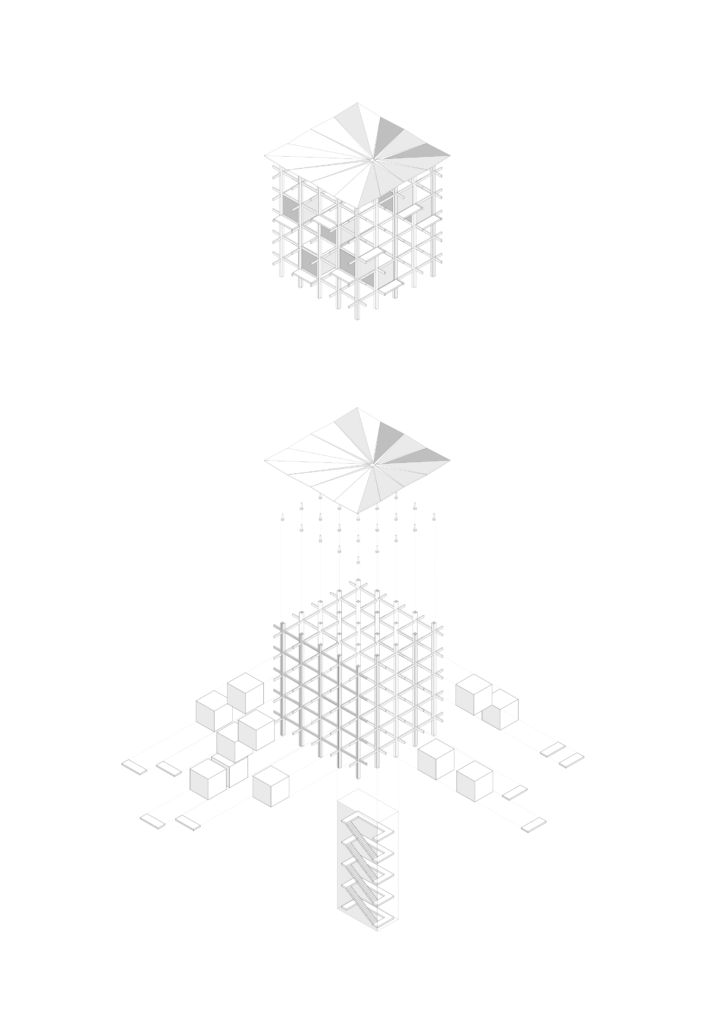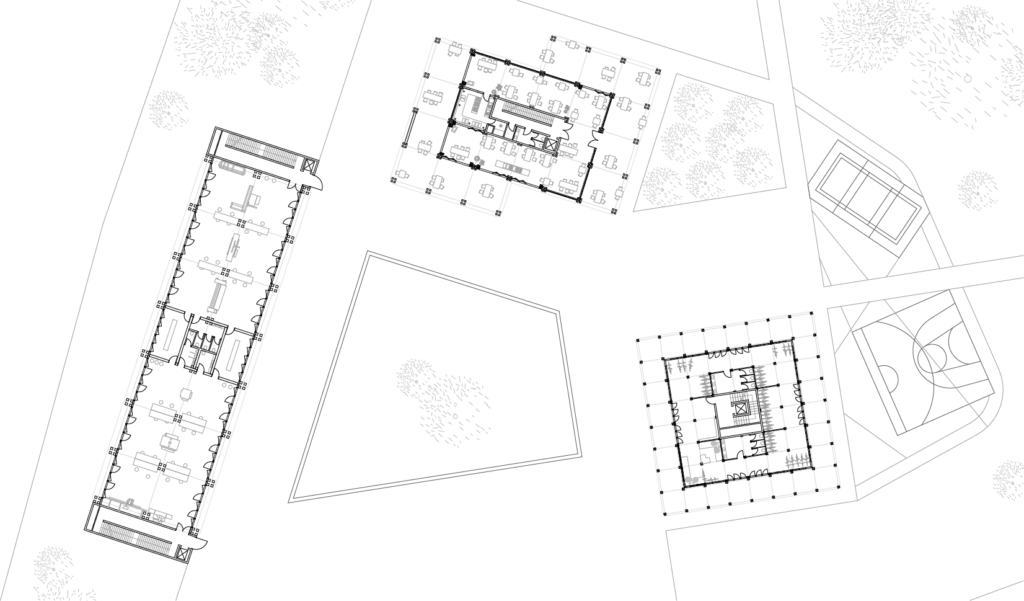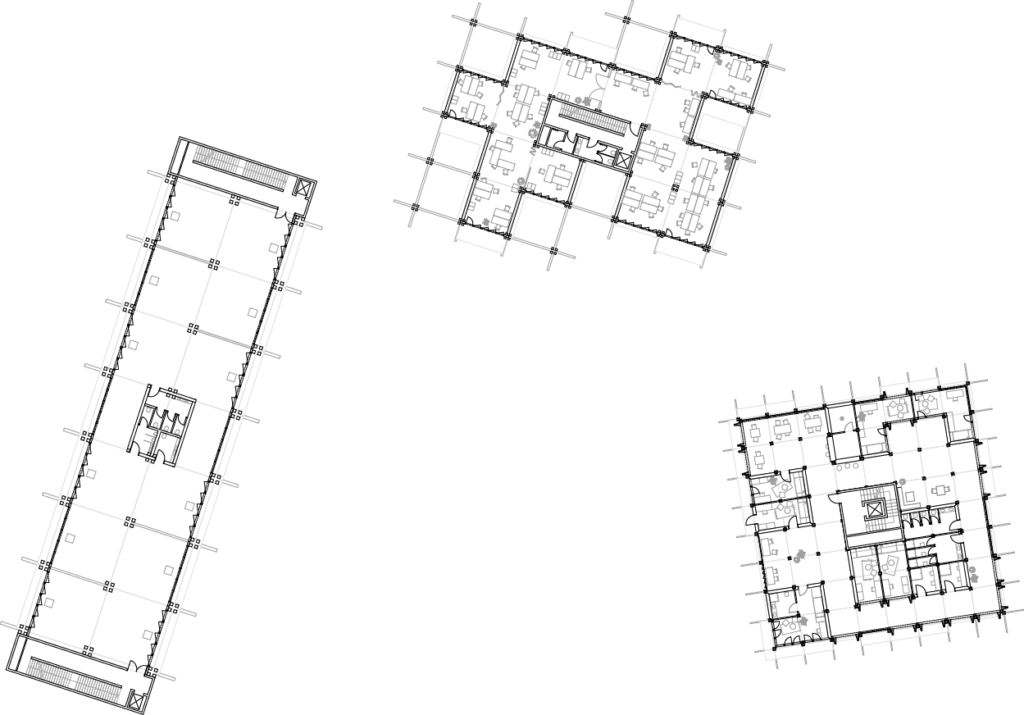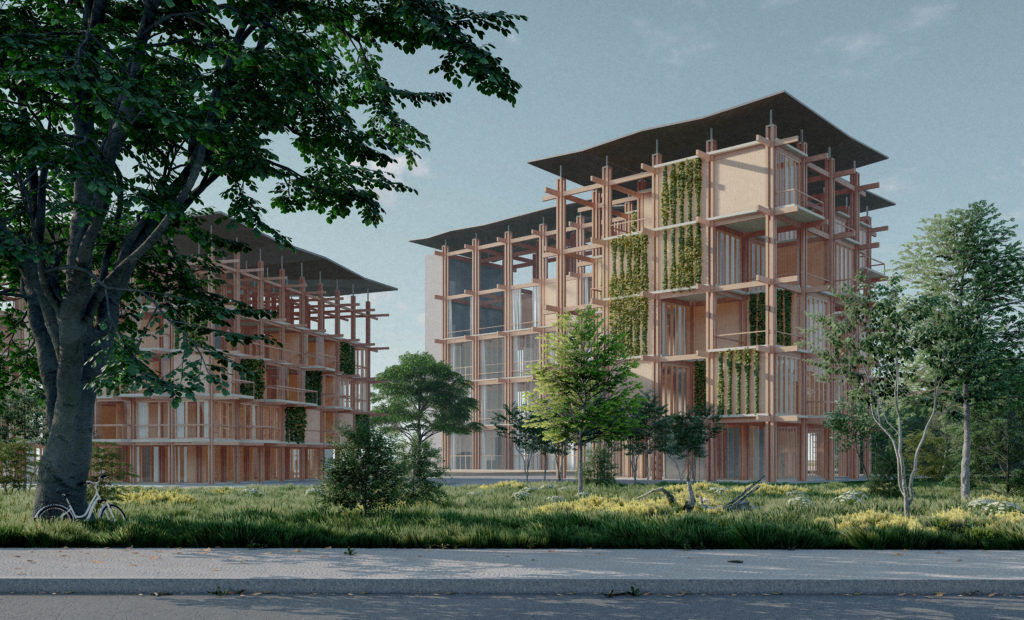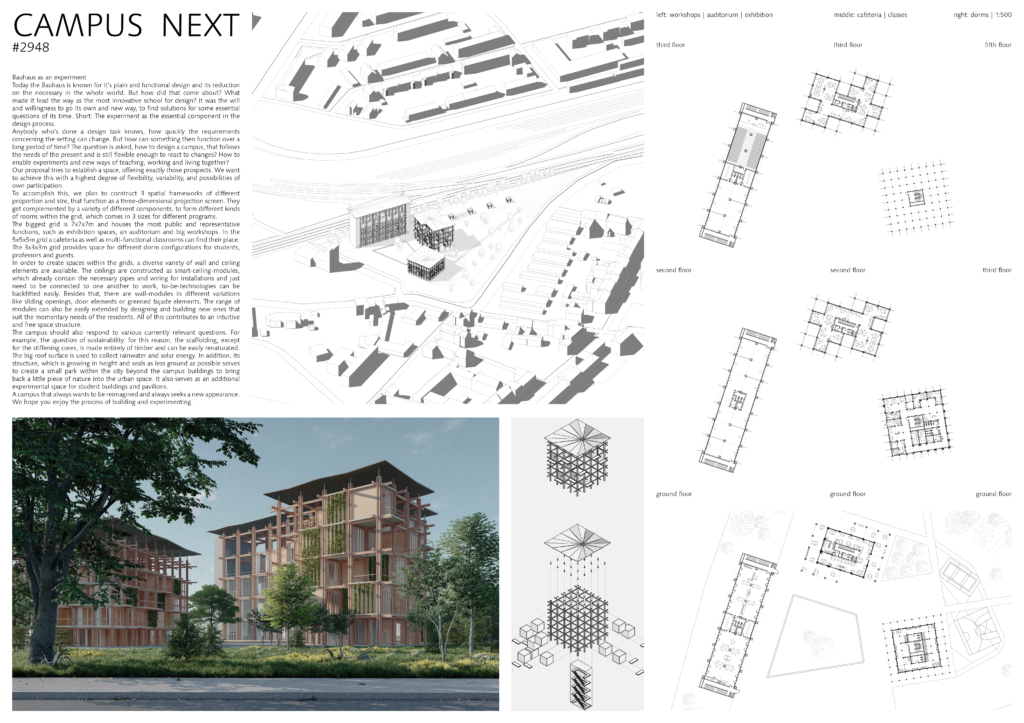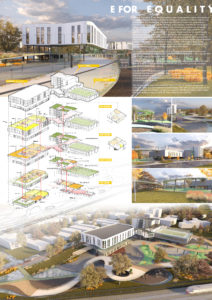Bauhaus as an experiment
Today the Bauhaus is known for it’s plain and functional design and its reduction on the necessary in the whole world. But how did that come about? What made it lead the way as the most innovative school for design? It was the will and willingness to go its own and new way, to find solutions for some essential questions of its time. Short: The experiment as the essential component in the design process.
Anybody who’s done a design task knows, how quickly the requirements concerning the setting can change. But how can something then function over a long period of time? The question is asked, how to design a campus, that follows the needs of the present and is still flexible enough to react to changes? How to enable experiments and new ways of teaching, working and living together?
Our proposal tries to establish a space, offering exactly those prospects. We want to achieve this with a highest degree of flexibility, variability, and possibilities of own participation.
To accomplish this, we plan to construct 3 spatial frameworks of different proportion and size, that function as a three-dimensional projection screen. They get complemented by a variety of different components, to form different kinds of rooms within the grid, which comes in 3 sizes for different programs.
The biggest grid is 7x7x7m and houses the most public and representative functions, such as exhibition spaces, an auditorium and big workshops. In the 5x5x5m grid a cafeteria as well as multi-functional classrooms can find their place. The 3x3x3m grid provides space for different dorm configurations for students, professors and guests.
In order to create spaces within the grids, a diverse variety of wall and ceiling elements are available. The ceilings are constructed as smart-ceiling-modules, which already contain the necessary pipes and wiring for installations and just need to be connected to one another to work, to-be-technologies can be backfitted easily. Besides that, there are wall-modules in different variations like sliding openings, door elements or greened façade elements. The range of modules can also be easily extended by designing and building new ones that suit the momentary needs of the residents. All of this contributes to an intuitive and free space structure.
The campus should also respond to various currently relevant questions. For example, the question of sustainability: for this reason, the scaffolding, except for the stiffening cores, is made entirely of timber and can be easily renaturated. The big roof surface is used to collect rainwater and solar energy. In addition, its structure, which is growing in height and seals as less ground as possible serves to create a small park within the city beyond the campus buildings to bring back a little piece of nature into the urban space. It also serves as an additional experimental space for student buildings and pavilions.
A campus that always wants to be reimagined and always seeks a new appearance.
We hope you enjoy the process of building and experimenting.
CAMPUS NEXT
This project was submited to the Bauhaus Campus 2021 competition with Registration ID #2948
Architektenklammern
Hai Tom Nguyen
Bauhaus-University Weimar
htomnguyen
Felix Balling
Bauhaus-University Weimar
felixballing
Leonard Weber
Bauhaus-University Weimar
leonard.web
Arthur Helmecke
Bauhaus-University Weimar
arthen_photography
read more +

